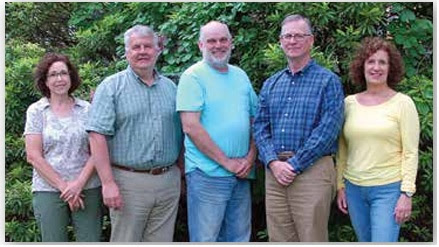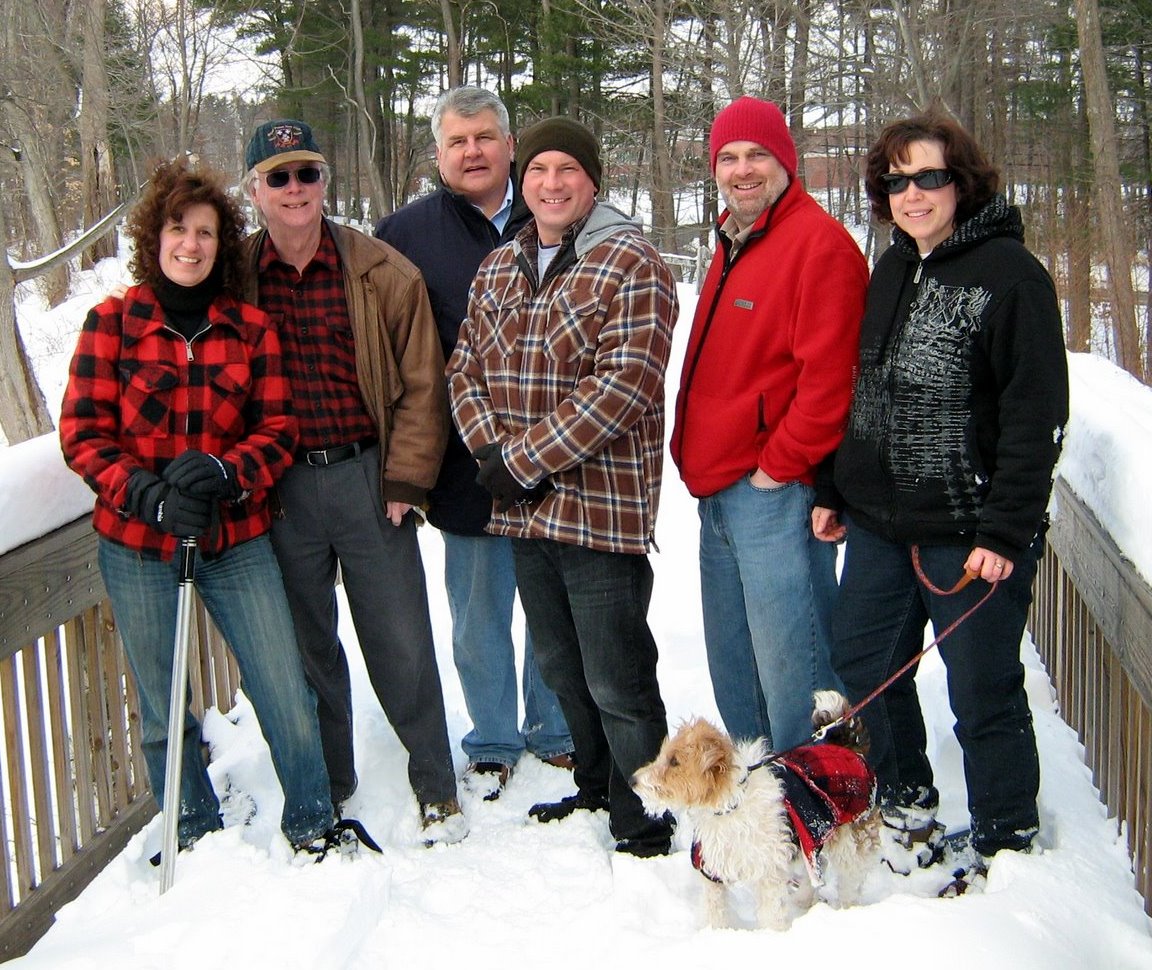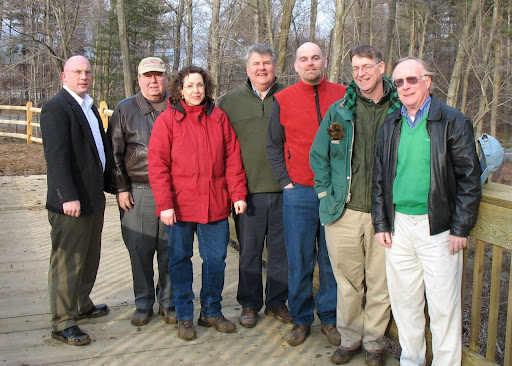Hearing Tuesday on townhouse proposal for Lauretti parcel
Anne M. Amato Published 10:14 p.m., Saturday, October 13, 2012
SHELTON -- A public hearing will take place Tuesday on a proposal by a Torrington developer to build 36 townhouses on River Road property owned by Mayor Mark A. Lauretti.
+++ Beating a dead horse with repeatedly pointing this out, but the property is not owned by Mark Lauretti. It is owned by Housatonic Way LLC, an entity in which Mark Lauretti has made no secret to being an owner of. That should be stated at the beginning of the article, not the end. +++
The 12-acre parcel has been at the center of controversy since the mayor purchased it in 2003 from Emhart Technologies for $235,000. It was the focus of an ethics complaint filed in 2004 by two former mayors, Michael Pacowta, and Eugene Hope, who cited a conflict of interest.
+++ The writer should state what the result of the ethics complaint was. No conflict was found. Spelling of Emhart's corporate name is incorrect. +++
Some residents wanted the city to keep the property as open space. However, the city's Conservation Commission twice has discussed that issue and twice has recommended the city not pursue purchasing the parcel.
+++ We discussed a certain parcel of land in 2005, see my recent post for a present day release of those documents. We separately discussed a certain parcel of land in 2012 that had a different nuance given remediation activity that had recently taken place immediately adjacent to the parcel. Somewhat similar, but not the same. +++
In a recent memo to the Board of Aldermen, the commission said the city has limited resources for purchasing open space; the property doesn't abut any open space; and the public access is somewhat restricted by two streams and a tidal basin. Commissioners also said the city is in the process of acquiring other open space and "jumping this property ahead of those would defeat the long-range plans for property acquisitions."
"That's how things stand now," said Tom Harbinson, commission chairman. He said the memo "speaks for itself." He said the commission doesn't send a memo to the aldermen on every parcel it reviews. But, he added, due to the public attention of this property -- because it's owned by a public official -- commissioners felt they should be as "open as we can."
+++ I was contacted on FriOct12 by the reporter for the above comments. The minutes of our 2012Oct3 meeting can be found here. The portion that pertains to this appears near the end and I excerpt it for continuity of this posting.
Commissioner McCreery MOVED to state that the Commission has considered the appropriateness of suggesting the BOA pursue the acquisition of 550 River Road for open space purposes for the City. We continue to stand on our original position that the City not pursue this property for open space for the following reasons: 1) The City does have limited resources for purchasing open space and we are in the process of acquiring additional open space for the Recreational Path, as we speak, which will be closing soon and the City will have to pay for that. Further, we have additional properties already in the pipeline that have been prioritized for acquisition, both in connection with the Recreational Path or other open space purposes. Jumping this property ahead of those would defeat the long-range plans for property acquisitions. 2) There now being a property division line that has purportedly been implemented to segregate the potentially contaminated site that abuts it does not address the concerns the Commission had when it originally recommended that the City not pursue this for open space because a property line does not prevent future potential migration of contamination. Whether the property is currently contaminated or not, we don’t think the City should incur the risk of acquiring the abutting land. 3) The property does not abut any
existing open space. 4) We feel the critical need to preserve the river and stream corridors that criss-cross this property and the unique tidal lagoon can be preserved by the land use agencies in town (Planning & Zoning Commission and Inland Wetlands Commission) by implementing appropriate restrictions on any development so as to preserve them. You don’t necessarily have to acquire the property to maintain those critical environmental features. 5) The public access is somewhat restricted by virtue of the co-joining of the two streams and the tidal lagoon, and finally, 6) In the past we’ve always historically had a co-partner in the acquisition being the landowner who has worked with the City to accept less than fair market value payment and or accept payments over time and we don’t perceive at this time that we have a willing seller. We have not been approached by the seller asking to sell the land to the City. By all the above mentioned reasons this Commission would not recommend pursing the acquisition of this property. SECONDED by Vice-
Chairman Dyer.
Discussion:
Commissioner Welsh said he knows we’re strapped because we’re buying a lot of land, and we’ve always done a good job. But to have that limit our aspirations for what might spring up, I think we might word it differently. The Commissioners agreed to modify the motion. Commissioner McCreery amended the motion to eliminate the part where we don’t have the resources to buy it. SECONDED by Vice-Chairman Dyer.
All were in favor; MOTION PASSED. Chairman Harbinson said to copy the Board of Aldermen on the motion.
+++
"Are we all sleeping?" said Aldermen John Anglace, board president, when asked if the aldermen would discuss the commission's decision.
"In 2005, the Conservation Commission took a position of no interest and the alderman took an action of no interest, " he said. "Why would anyone want to change those decisions seven years later, especially now that there's a contract on the property and the property value has escalated?"
+++ The character of any property could change over 7 years, but for all the reasons mentioned above (which does not include any aspects of who may or may not own the property, who may have contract to purchase the property, or what value of the property is since we have no appraisal) our decision speaks for itself +++
"It would be stupid," Anglace said. He said why the parcel is an issue is "just plain and simple": "It's because it's the mayor's," he said.
In their ethics complaint, Pacowta, a Democrat, and Hope, a Republican, claimed Lauretti, a Republican, used his position as the city's economic development director to secure the "prime riverfront property." The former mayors and their supporters said Lauretti instead could have looked into having the city buy the land for open space.
+++ The filing of maps on the City land records, created a parcel that could be sold/purchased. This has been termed an "inappropriate subdivision" by staff, and is something that I would hope the Planning and Zoning will address at a future date, but certainly in the course of the current applications for a zone change and for a development..+++
Lauretti has, at various times, considered building a banquet hall, condominiums and finally several homes on the property, but never pursued those plans, so the property remains undeveloped.
The mayor announced earlier this year that Country Club of CT LLC, of Torrington, was purchasing the property, which is under Housatonic Way LLC. The company is seeking a zone change from residential to Planned Development District, which would allow the construction of a 36-unit cluster that would be called Blue Heron Cove.
+++ There are two reference names on title blocks of various drawings submitted with applications, some of which refer to this as "Blue Heron Cove". +++
The Planning and Zoning Commission public hearing on the plan is scheduled for 7 p.m. Tuesday in City Hall. The proposal was on the Inland/ Wetlands Commission's Wednesday agenda, but the meeting was cancelled for lack of a quorum.
+++ The PZC public hearing was delayed because according to PZC staff, the Ct Post messed up the publishing of the public notice. The IWC application was extended 45 days at the request of the applicant. +++
Lauretti could not be reached for comment.


